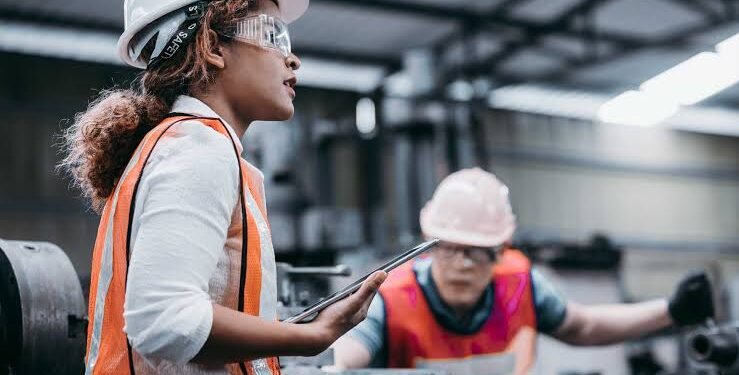Construction sites are inherently risky environments where workers are exposed to various hazards daily. To mitigate these risks, comprehensive Construction safety training is crucial. This blog outlines the essential training programmes for workers in high-risk construction environments, ensuring they are well-prepared to handle potential dangers and perform their duties safely.
Contents
- 1 Construction Safety Training
- 1.1 Related posts
- 1.2 Global Esports Momentum Drives Investor Optimism as GameSquare Shares Climb on Growth Prospects
- 1.3 Boost Your B2B Sales Pipeline: Book a Free Consultation with Clutch-Recognized SalesAR
- 1.4 How Thinking Errors Hinder Business Growth – And How to Overcome Them
- 1.5 What is Regulatory Arbitrage and How to Avoid Scams
- 1.6 Bridging the Gap Between Workforce Management and Business Efficiency: The Snow Technology Solution
- 1.7 Easy Spray: Your Trusted Partner for Custom Manufacturing in London
- 1.8 Why Transportation Companies Choose Industry-Specific Consultants
- 2 Working at Height Training
- 3 Electrical Safety Training
- 4 Manual Handling Training
- 5 Machine and Equipment Safety Training
- 6 Ladder Safety Training
- 7 Hazardous Materials Handling Training
- 8 Excavation and Trenching Safety Training
- 9 First Aid and CPR Training
- 10 Conclusion
Construction Safety Training
Construction safety training is the cornerstone of a safe working environment. It encompasses various topics designed to educate workers on recognising, assessing and mitigating risks. It is vital for all construction workers, regardless of their specific roles. The primary goal is to cultivate a culture of safety that permeates every level of the workforce, decreasing the likelihood of accidents and injuries.
Working at Height Training
Falls from heights are one of the most common construction site hazards that cause fatalities and severe injuries. Working at height training course is crucial for anyone who is responsible for working at elevated levels, whether on scaffolding, ladders or rooftops. This training covers:
- Risk Assessment: Identifying potential fall hazards and assessing the risks associated with specific tasks.
- Fall Prevention: Implementing measures such as guardrails, safety nets and harness systems to prevent falls.
- Proper Equipment Use: Training workers on correctly using ladders, scaffolding and fall arrest systems.
- Emergency Procedures: Preparing workers to respond effectively to fall-related incidents.
Electrical Safety Training
Electrical hazards pose significant risks on construction sites, where workers are often exposed to high-voltage equipment and complex wiring systems. The Electrical safety training is crucial for working directly with or near electrical installations. Critical components of this training include:
- Understanding Electrical Hazards: Recognising potential electrical risks such as exposed wires, faulty equipment and wet conditions.
- Safe Work Practices: Adopt procedures to safely work with electrical systems, including lockout/tagout protocols, use of insulated tools and maintaining a safe distance from live wires.
- Emergency Response: Training workers to respond to electrical emergencies, including burns, shocks and fires.
Manual Handling Training
Manual handling involves the lifting, carrying and moving heavy loads, which can lead to musculoskeletal injuries if not done correctly. The Manual handling training is essential for preventing these injuries and promoting safe work practices. Key topics covered in this training include:
- Ergonomics: Understanding the principles of ergonomics and how to apply them to reduce strain on the body.
- Proper Lifting Techniques: Learning the correct way to lift and carry objects to minimise the risk of injury.
- Use of Mechanical Aids: Training on using equipment such as trolleys, hoists and forklifts to assist with heavy lifting.
- Risk Assessment: Identifying potential manual handling hazards and implementing mitigation measures.
Machine and Equipment Safety Training
Construction sites are filled with various machines and equipment, each with distinct hazards. Machine and equipment safety training ensures workers can operate these tools safely and efficiently. This training includes:
- Equipment Familiarisation: Understanding the different types of machines and their specific functions and hazards.
- Operational Safety: Learning the correct procedures for operating equipment, including starting, stopping and emergency shutdown.
- Maintenance and Inspections: Performing regular inspections to ensure equipment is in safe working condition.
- Personal Protective Equipment (PPE): Using appropriate PPE when operating machinery to protect against potential hazards.
Ladder Safety Training
Ladders are commonly used on construction sites, but improper use can lead to severe accidents. A ladder safety awareness course is essential for anyone who uses ladders as part of their job. This training covers:
- Ladder Selection: Choosing the correct ladder type for the specific task and ensuring it meets safety standards.
- Inspection: Regularly inspecting ladders for defects or damage before use.
- Proper Use: Learning to safely set up, climb and descend ladders.
- Hazard Awareness: Identifying potential hazards, such as unstable surfaces or overhead obstacles and taking steps to mitigate them.
Hazardous Materials Handling Training
Construction sites frequently contain hazardous materials, including chemicals, solvents and asbestos. Appropriate handling and disposal of these dangerous materials are critical to avoiding health risks and environmental contamination. Hazardous materials handling training includes:
- Identifying Hazardous Materials: Recognising different hazardous materials and understanding their potential risks.
- Safe Handling Procedures: Learning to handle, store and transport hazardous materials safely.
- Personal Protective Equipment (PPE): Using appropriate PPE to protect against exposure to hazardous substances.
- Emergency Response: Preparing workers to respond to spills, leaks and other hazardous material incidents.
Excavation and Trenching Safety Training
Excavation and trenching are everyday activities on construction sites that pose significant risks, including cave-ins, falls and hazardous atmospheres. The Excavation and trenching safety training is essential to protect the workers involved. Critical components of this training include:
- Hazard Identification: Recognising potential hazards associated with excavation and trenching, such as unstable soil and underground utilities.
- Protective Systems: Implementing protective measures, such as shoring, shielding and sloping, to prevent cave-ins.
- Safe Work Practices: Learning safe excavation and trenching techniques, including proper entry and exit procedures.
- Emergency Preparedness: Preparing workers to respond to emergencies, such as cave-ins and hazardous atmospheres.
First Aid and CPR Training
In an accident or medical emergency on a construction site, immediate response can save lives and minimise injuries. First aid and CPR training are vital for equipping workers with the skills to provide initial care. This training includes:
- Basic First Aid: Learning to evaluate and manage common injuries, including cuts, burns and fractures.
- Cardiopulmonary Resuscitation (CPR): Training workers to perform CPR in the event of cardiac arrest.
- Automated External Defibrillator (AED) Use: Learning how to utilise an Automated External Defibrillator (AED) to restore a normal heart rhythm.
- Emergency Response: Preparing workers to respond effectively to various medical emergencies until professional help arrives.
Conclusion
Ensuring the safety of workers in high-risk construction environments is essential. Comprehensive training programmes covering various safety topics are crucial for equipping workers with the knowledge and skills to carry out their duties safely. From working at height and electrical safety to manual handling and hazardous materials handling, each training programme addresses specific risks and promotes a safety culture. By prioritising safety training, construction companies can significantly decrease the likelihood of accidents and injuries, cultivating a safer and more productive work environment.


















